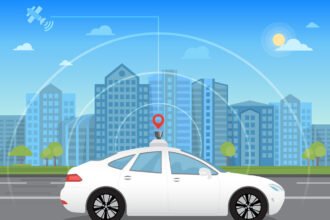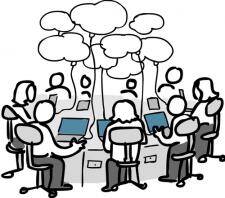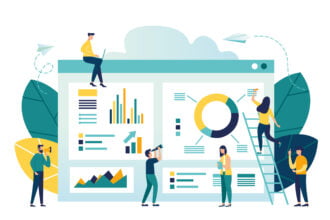SaaS is effectively the same as outsourcing – you’re handing control over business processes to a third-party service provider. However, while SaaS delivery shares many similarities with outsourcing as a delivery model, there are serious caveats buyers need to consider.
For today’s business executive, it’s easy to get excited by the potential of SaaS-based offerings. The low-cost upfront investment and pay-by-the-drink pricing can quickly get you the business services you need without the painful customization and implementation impediments of yesteryear. There no more fretting over your IT department not having the expertise or resources to implement, develop and maintain the application. Bottom-line, SaaS creates a business utility service that is revolutionizing the software and outsourcing industries (see Figure 1), especially in the worlds of the manufacturing, marketing and HR executive.
Figure 1: SaaS and BPO delivery creeping into the Enterprise Software Purchasing Model (Click to enlarge)
So what are the similarities and differences between SaaS and Outsourcing?
SaaS is like outsourcing as you’re handing over control of application delivery to a third-party and relying…
SaaS is effectively the same as outsourcing – you’re handing control over business processes to a third-party service provider. However, while SaaS delivery shares many similarities with outsourcing as a delivery model, there are serious caveats buyers need to consider.
For today’s business executive, it’s easy to get excited by the potential of SaaS-based offerings. The low-cost upfront investment and pay-by-the-drink pricing can quickly get you the business services you need without the painful customization and implementation impediments of yesteryear. There no more fretting over your IT department not having the expertise or resources to implement, develop and maintain the application. Bottom-line, SaaS creates a business utility service that is revolutionizing the software and outsourcing industries (see Figure 1), especially in the worlds of the manufacturing, marketing and HR executive.
Figure 1: SaaS and BPO delivery creeping into the Enterprise Software Purchasing Model (Click to enlarge)
So what are the similarities and differences between SaaS and Outsourcing?
SaaS is like outsourcing as you’re handing over control of application delivery to a third-party and relying on it to look after the maintenance and support. You’re also not paying anything for housing your data. But does low-cost mean low-risk?
Data concerns: What concerns me with SaaS delivery is the lack of provisions for compliance, business continuity, security and privacy of data. Moreover, there is often a far-reduced level of control over data and processing, for which a well-crafted outsourcing contract caters. Outsourcing goes to great lengths to stipulate where data resides, how it is protected, who has access, which measures are in place to accomodate political or natural disaters, and how data management complies with regulations. In addition, outsourcing providers are SAS 70 compliant, but are all SaaS providers? With SaaS, data is being processed in the Cloud. But does the Cloud have parameters? Does a SaaS contract have any reference to where cloud is located? These are questions you must ask when exploring these models.
Governance concerns: The massive appeal of SaaS to outsourcing service providers is the reduction in customization for new customers, which makes their services less appealing from a price perspective. The outsourcing Holy Grail is the one-to-many model where they can delivery common processes to multiple clients in a standard format. SaaS delivers that model in spades. If outsourcing service providers can acquire successful SaaS applications, they could hit a home-run with a utility delivery model, especially for business processes where buyers are willing to standardize onto a vendor model, for example payroll, general accounting, performance management, or CRM.
Hence, customers looking to procure SaaS will have to change their business processes to fit with a SaaS offering. They do all the transformation at their end, hence this entails a very different focus on transition into a managed service model.
SaaS is too easy: What worries me here is the lack of any upfront investment and how that impacts their governance over that business process. It is a serious step for companies to enter into an outsourcing engagement, with significant change mangement required to establish governance over those outsourced processes.
With SaaS, companies can sign up, flip a switch, and they’re up and running with zero upfront investment. Does this mean they are going to invest nearly as much attention on governing these processes? My experience so far is no. Companies move into SaaS because it is cheap and easy, and often overlook the internal business transformation then need to go through to manage these processes effectively in an outsourced environment.
Outsourcing is a big investment, and the customer has to earn its savings overt time, while the service provider needs to earn its investment over time. SaaS is not a big investment for the service provider, but it should be treated as the SAME investment for the customer. If not, you could end up with an outsourced environment with no controls… not something that is going to be healthy for your business in this market.








